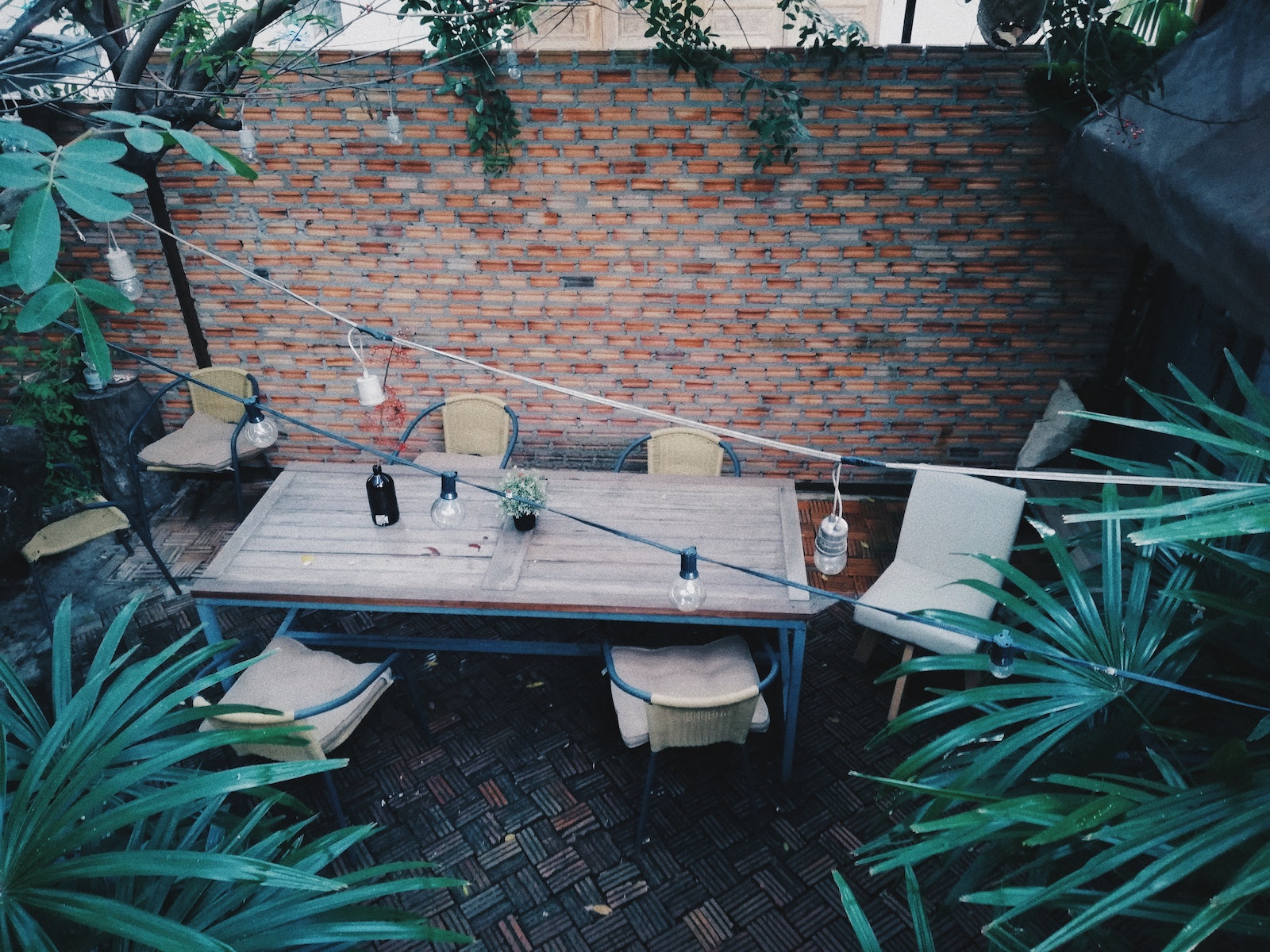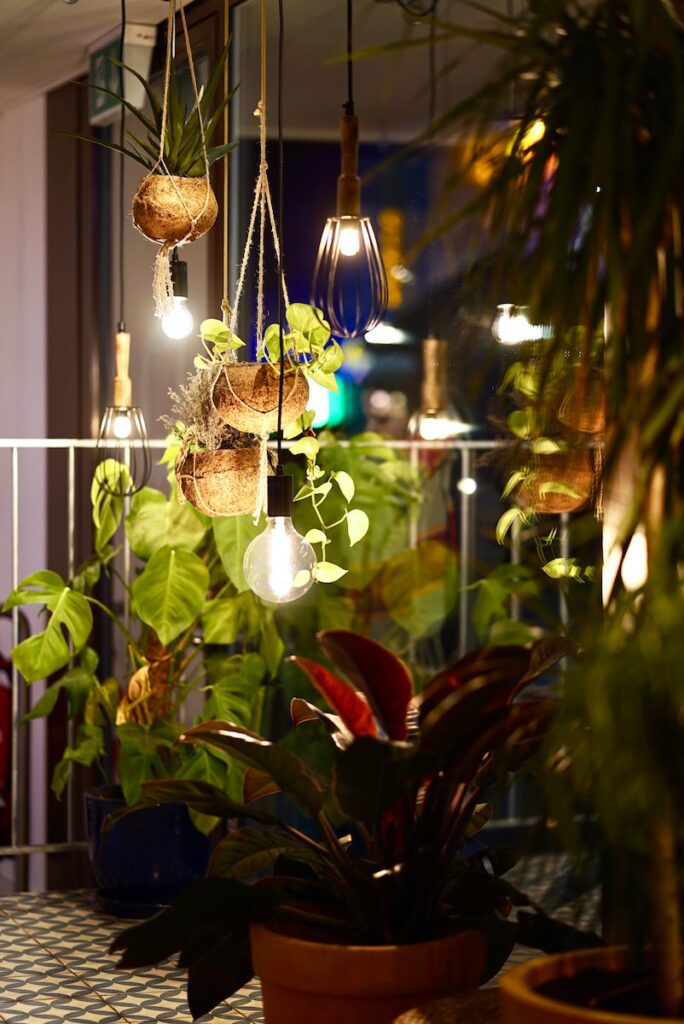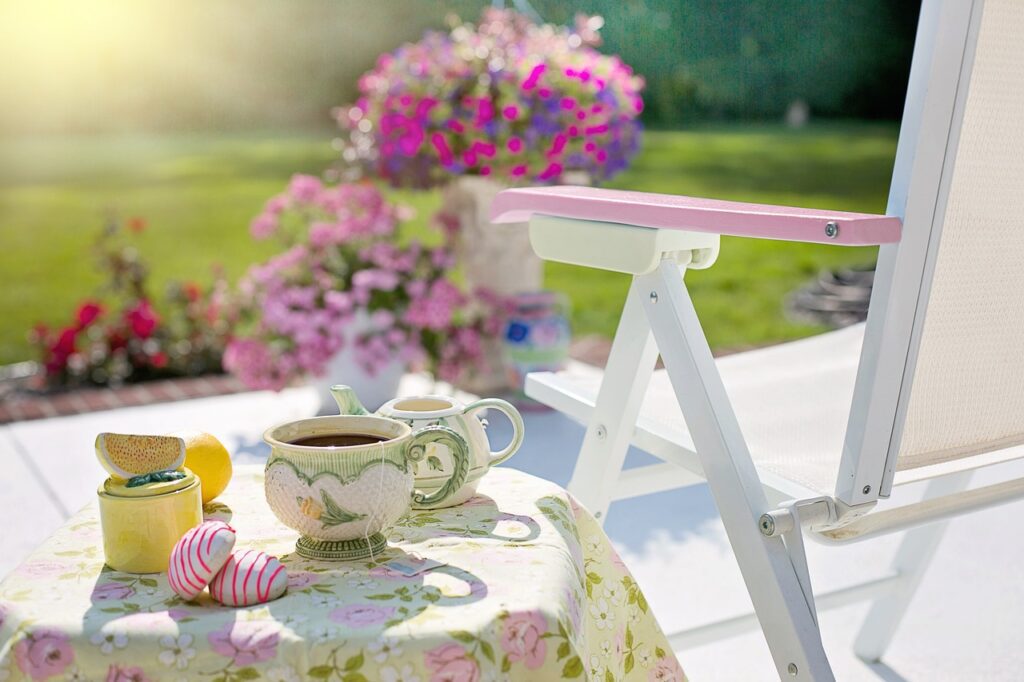Learn how to decorate patio with plants and transform your space into a lush oasis with our comprehensive guide on that offers both tips and tricks on the subject. Discover creative ideas, practical knowledge, and expert advice to infuse your outdoor space with natural beauty and serenity.
Welcome to the world of outdoor enchantment! Your patio is not just an extension of your home; it’s an opportunity to create a vibrant sanctuary where you can unwind, entertain, and connect with nature.
By incorporating plants into your patio decor, you can transform it into a captivating oasis that soothes the soul and pleases the eye. In this comprehensive guide, we will explore the art of decorating your patio with plants, providing you with inspiration, tips, and guidance to create a green haven that reflects your style and rejuvenates your senses. So, let’s dive into the lush world of patio plant decoration!
How to Decorate Your Patio with Plants: Unleashing Nature’s Beauty
Contents
- 1 How to Decorate Your Patio with Plants: Unleashing Nature’s Beauty
- 2 How To Choose The Best Plants For Decorating A Patio?
- 3 How To Incorporate Vertical Gardening On Your Patio With Plants?
- 4 What are the best hanging plants for a patio?
- 5 FAQs about How to Decorate Patio with Plants
- 6 Q: Are there any plants suitable for shady patios?
- 7 Final Thoughts on How to Decorate Patio with Plants
1. Assess Your Patio Space
Before diving into plant selection and placement, it’s crucial to assess your patio space and understand its unique characteristics. Consider the following factors:
- Sunlight: Observe the sun patterns on your patio throughout the day. Identify areas with direct sunlight, partial shade, and full shade to determine suitable plant choices.
- Size and Layout: Take note of the available space, including vertical surfaces, such as walls or railings, and the floor area. Assess the overall layout and flow to optimize plant placement.
- Climate and Weather Conditions: Evaluate the climatic conditions of your region and consider the seasonal variations. This will help you choose plants that thrive in your specific environment.
2. Selecting Patio-Friendly Plants
Choosing the right plants is crucial to ensure their long-term health and vitality on your patio. Look for plants that exhibit the following characteristics:
- Outdoor Hardy: Opt for plants that are suitable for outdoor conditions and can withstand temperature fluctuations, wind, and rain.
- Container-Friendly: Select plants that can thrive in containers, such as pots or hanging baskets. Look for varieties with compact growth habits or trailing vines for vertical interest.
- Low Maintenance: Consider plants that require minimal care and are suitable for your available time and commitment level. Drought-tolerant varieties can be ideal for busy individuals or areas with limited water availability.
- Aesthetically Pleasing: Choose plants with attractive foliage, colorful blooms, or unique textures to enhance the visual appeal of your patio.
3. Creating a Planting Plan
A well-thought-out planting plan ensures a harmonious arrangement of plants on your patio. Follow these steps to create a captivating plant display:
- Thriller, Filler, Spiller: Employ the “thriller, filler, spiller” technique to create dynamic and visually appealing plant arrangements. Choose a focal plant as the “thriller,” complemented by medium-sized plants as “fillers,” and trailing or cascading plants as “spillers” to add vertical and cascading interest.
- Height and Proportions: Consider the height and growth habits of your selected plants to create a balanced composition. Place taller plants at the back or corners and use shorter plants as foreground or border plants.
- Color Palette: Determine a color scheme or theme to guide your plant selection. Harmonize colors or create contrasting combinations for a visually stunning display.
- Textures and Shapes: Incorporate plants with varied leaf textures, shapes, and sizes to add depth and visual interest. Combine plants with smooth leaves, spiky foliage, and delicate fronds for a captivating tapestry.
4. Placement and Arrangement
Strategic plant placement and arrangement can maximize the impact of your patio’s greenery. Consider the following tips:
- Vertical Spaces: Utilize vertical surfaces such as walls, railings, or trellises for climbing plants or hanging containers. This optimizes space and adds a vertical dimension to your patio design.
- Grouping and Layering: Cluster plants with similar water and light requirements together to facilitate care. Layer plants of different heights to create depth and a sense of abundance.
- Focal Points: Position a striking plant or decorative element as a focal point to draw attention and create a captivating centerpiece for your patio.
- Pathways and Entrances: Frame pathways or entrances with potted plants or hanging baskets to create a welcoming ambiance and guide visitors through your patio space.


How To Choose The Best Plants For Decorating A Patio?
Choosing the best plants for decorating a patio involves considering several factors such as sunlight, climate, space availability, and personal preferences. Here are some steps to guide you in selecting the perfect plants for your patio:
- Assess Sunlight Conditions: Observe the amount of sunlight your patio receives throughout the day. Determine if it’s in full sun, partial shade, or full shade. This information will help you choose plants that thrive in your specific lighting conditions.
- Consider Climate and Hardiness: Take into account your local climate and the hardiness of the plants you’re interested in. Some plants are more suited to warmer climates, while others can withstand cooler temperatures or even frost. Choose plants that are suitable for your climate to ensure their long-term survival.
- Evaluate Space Availability: Assess the available space on your patio, both horizontally and vertically. Consider if you have room for potted plants on the ground, hanging baskets, or vertical planters. This will help determine the size and type of plants you can accommodate.
- Determine Maintenance Level: Consider your time and commitment level for plant care. If you have limited time or prefer low-maintenance options, choose plants that require less watering, pruning, or fertilizing. Drought-tolerant plants or succulents can be excellent choices for low-maintenance patio decoration.
- Choose Suitable Containers: Select containers that complement your patio’s style and provide adequate space for plant growth. Ensure that the containers have drainage holes to prevent waterlogging, which can harm the plants’ roots.
- Consider Seasonal Interest: Decide if you want plants that provide year-round beauty or if you prefer seasonal blooms. You can choose a mix of evergreen plants for continuous greenery and flowering plants for bursts of color during specific seasons.
- Explore Plant Varieties: Research different plant varieties and their characteristics. Consider their growth habits, foliage color and texture, flower types, and fragrance. This will help you create a diverse and visually appealing plant arrangement on your patio.
- Incorporate Different Heights and Layers: Choose plants of varying heights to add visual interest and create depth on your patio. Combine taller plants for vertical elements, medium-sized plants as fillers, and trailing or cascading plants for a touch of elegance and lushness.
- Consider Companion Planting: Some plants thrive better when planted together due to their complementary needs or pest-repellent properties. Consider companion planting techniques to maximize the health and beauty of your patio plants.
- Personal Taste and Style: Ultimately, choose plants that resonate with your personal taste and match the style you want to achieve on your patio. Whether you prefer a tropical theme, a minimalist approach, or a vibrant mix of colors, select plants that align with your vision.
By considering these factors, you can confidently select the best plants for decorating your patio. Remember to provide appropriate care, regular watering, and occasional fertilization to ensure the long-term health and beauty of your patio plants.
How To Incorporate Vertical Gardening On Your Patio With Plants?
Incorporating vertical gardening on your patio with plants is a creative way to maximize space and add visual interest. Here are some steps to help you get started:
- Assess Available Space: Determine the available vertical surfaces on your patio that can be utilized for vertical gardening. This can include walls, fences, trellises, or pergolas. Take measurements and consider the weight-bearing capacity of the structures.
- Choose Suitable Plants: Select plants that are well-suited for vertical growth. Look for climbing plants, vines, or trailing varieties that have a natural inclination to grow upward. Consider factors such as sunlight requirements, hardiness, and the suitability of the plant for vertical support.
- Select the Right Vertical Structures: Choose the appropriate vertical structures based on the size and growth habit of the selected plants. This can include trellises, arbors, lattice panels, or wall-mounted planters. Ensure the structures are securely anchored and provide adequate support for the plants.
- Plan Plant Placement: Visualize the desired arrangement and plan where each plant will be positioned. Consider factors such as the growth rate, size, and spacing requirements of the plants. Place taller plants towards the back or center of the vertical structure and cascading or trailing plants towards the front or edges.
- Prepare the Vertical Support: Install the chosen vertical structures securely on your patio. Ensure they are stable and can withstand wind or other environmental factors. If attaching to a wall, make sure to use appropriate fasteners that won’t damage the surface.
- Planting and Training: Plant the selected plants at the base of the vertical structure or in containers that can be mounted or hung on the structure. Provide adequate soil, water, and nutrients for the plants to thrive. As the plants grow, gently guide their tendrils or stems towards the vertical support, encouraging them to climb or trail along it.
- Regular Maintenance: Regularly monitor the growth of the plants and adjust their positioning if needed. Prune or trim the plants as necessary to maintain the desired shape and size. Water the plants according to their specific needs and fertilize them as recommended for optimal growth.
- Consider Companion Plants: To enhance the visual appeal of your vertical garden, consider incorporating companion plants at the base or in nearby containers. These can include annuals, perennials, or ornamental grasses that complement the vertical plants and add color or texture.
- Provide Adequate Support: As the plants grow, periodically check the stability and integrity of the vertical structures. Provide additional support or reinforcements if necessary to ensure the safety of the plants and the structure itself.
- Enjoy the Vertical Garden: Once your vertical garden is established, take pleasure in the beauty and uniqueness it brings to your patio. Admire the lush foliage, cascading blooms, and the vertical dimension it adds to your outdoor space.
By incorporating vertical gardening techniques on your patio, you can make the most of limited space while creating a visually stunning display of plants. The vertical elements will add interest, texture, and a touch of natural beauty to your patio oasis.
What are the best hanging plants for a patio?
When it comes to choosing the best hanging plants for a patio, there are numerous options available that can add beauty and a touch of greenery to your outdoor space. Here are some popular choices:
- Boston Fern (Nephrolepis exaltata): Known for its delicate fronds, the Boston Fern is a classic choice for hanging baskets. It thrives in filtered light and requires regular watering to keep the soil moist.
- English Ivy (Hedera helix): With its trailing vines and lush foliage, English Ivy is an excellent choice for hanging planters. It tolerates various light conditions but prefers indirect or filtered light. It’s known for its ability to purify the air.
- String of Pearls (Senecio rowleyanus): This unique succulent features cascading strands of small, round leaves resembling pearls. It thrives in bright, indirect light and requires well-draining soil. Allow the soil to dry between waterings.
- Petunias (Petunia spp.): These colorful annual flowers are ideal for hanging baskets, adding vibrant blooms to your patio. They come in a variety of colors and thrive in full sun to partial shade. Regular watering and deadheading can help prolong blooming.
- Geraniums (Pelargonium spp.): Geraniums are popular for their vibrant flowers and trailing growth habit, making them suitable for hanging containers. They prefer full sun and well-draining soil. Regular deadheading and moderate watering are essential for healthy growth.
- Spider Plant (Chlorophytum comosum): Spider plants have long, arching leaves with small plantlets that dangle from the stems, giving them a cascading appearance. They are adaptable and can thrive in various light conditions, making them a versatile choice for hanging baskets.
- Million Bells (Calibrachoa spp.): These charming, bell-shaped flowers come in various colors and resemble miniature petunias. They bloom profusely and create a beautiful trailing effect in hanging baskets. They prefer full sun and regular watering.
- Trailing Pothos (Epipremnum aureum): Pothos is a popular trailing plant that can be grown in hanging baskets. It features heart-shaped leaves in shades of green and variegated patterns. It thrives in a variety of light conditions, from low to bright indirect light.
- Fuchsia (Fuchsia spp.): Fuchsias are known for their stunning, pendulous flowers in vibrant hues. They prefer partial shade and consistent moisture. They can be grown in hanging baskets to showcase their graceful blooms.
- Lantana (Lantana camara): Lantanas are versatile plants that attract butterflies with their clusters of colorful flowers. They are drought-tolerant and prefer full sun. Their trailing growth habit makes them suitable for hanging baskets.
Remember to consider the specific light and watering requirements of each plant when selecting hanging plants for your patio. Additionally, ensure that your hanging baskets have proper drainage to prevent waterlogging.
FAQs about How to Decorate Patio with Plants
Q: Can I decorate my patio with both flowering and non-flowering plants?
A1: Absolutely! Combining flowering and non-flowering plants adds depth and visual interest to your patio. Flowering plants provide seasonal blooms, while foliage-focused plants offer year-round beauty.
Q: How often should I water my patio plants?
A2: The watering frequency depends on various factors, such as plant species, container size, weather conditions, and soil moisture retention. Monitor the soil moisture level regularly and adjust watering accordingly.
Q: Are there any plants suitable for shady patios?
A3: Yes, several plants thrive in partial or full shade conditions. Consider shade-loving plants like ferns, hostas, begonias, and impatiens to add greenery to shady areas of your patio.
Final Thoughts on How to Decorate Patio with Plants
Now you know how to decorate patio with plants, there is nothing to keep you back. Transforming your patio into a verdant retreat is an exciting endeavor that allows you to reconnect with nature and create a serene outdoor haven.
By following the steps outlined in this guide, you can confidently select and arrange plants that bring life, color, and vitality to your patio. Embrace the beauty of nature, experiment with plant combinations, and let your creativity flourish as you curate your own green oasis.
With careful planning and a touch of green-thumb magic, your patio will become a breathtaking sanctuary that invites relaxation, inspiration, and joyful moments amidst the natural splendor. So, let your patio bloom and flourish with an abundance of plant beauty!







